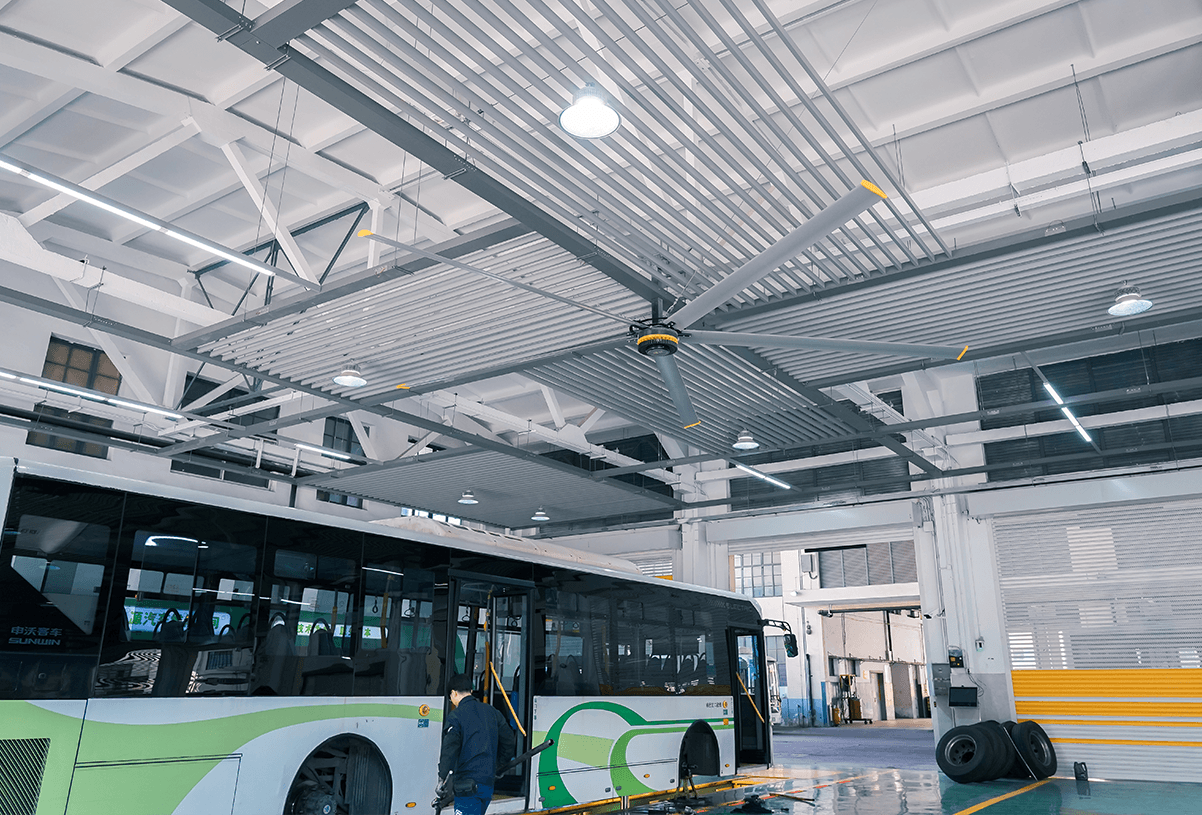Contact us to get started with the cooperation now
Our Sales team will contact you shortly
Kale HVLS (High-Volume, Low-Speed) fans are an ideal solution for improving conditions in a bus station. These large-diameter fans gently move massive volumes of air, effectively destratifying the building by mixing the hot and cold air layers to create a more uniform temperature throughout the waiting area.

Bus stations are challenging environments characterized by large, open spaces with high ceilings and frequent opening of doors. These factors lead to significant temperature stratification, where hot or cold air becomes trapped at the ceiling level, creating uncomfortable and stagnant conditions at the ground level where passengers and staff are located. This not only causes discomfort but also forces heating and cooling systems to work inefficiently, leading to excessive energy consumption.
Kale HVLS (High-Volume, Low-Speed) fans are an ideal solution for improving conditions in a bus station. These large-diameter fans gently move massive volumes of air, effectively destratifying the building by mixing the hot and cold air layers to create a more uniform temperature throughout the waiting area. During summer, the gentle breeze creates a wind-chill effect, making passengers feel noticeably cooler. In winter, operating the fans in a reverse mode at low speed recirculates warm air that has risen back down to the passenger level, enhancing comfort without creating a draft.
The installation of Kale HVLS fans translates into direct benefits for both passengers and station operators. For the public, it creates a more comfortable and pleasant waiting experience by eliminating stuffy, stagnant air and reducing humidity. For management, the fans promote substantial energy savings by reducing the strain on HVAC systems, lowering utility costs year-round. By ensuring consistent air movement, Kale HVLS fans provide an efficient, cost-effective way to enhance air quality and comfort in a demanding public transit environment.